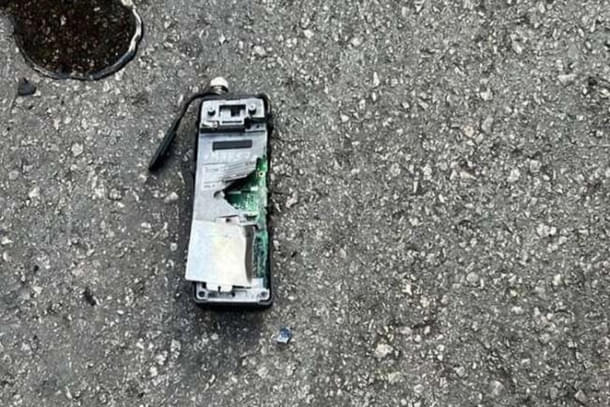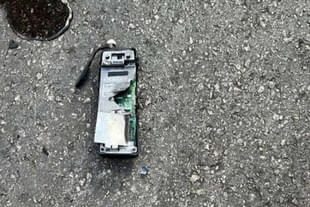Technology
Pager Blasts Expose Global Supply Chain Vulnerabilities: Lessons For India’s Semiconductor Mission
Vidhyashankar Sathya
Oct 05, 2024, 06:40 PM | Updated 06:40 PM IST
Save & read from anywhere!
Bookmark stories for easy access on any device or the Swarajya app.


There is a credible explanation for the remote detonation of multiple pagers targeting Hezbollah in September — tampering with pagers and walkie-talkies, inserting limited blast-range explosives to function like IEDs (improvised explosive devices). The theory of pagers overheating and exploding is increasingly being ruled out.
Nevertheless, the question remains: how did they manage to physically tamper with the pagers?
Furthermore, what can countries do to secure their supply chains against such tampering?
India, a nation with ambitious plans for its semiconductor industry and facing a challenging security environment, is one example of a country that must begin taking these steps.
This issue highlights the perils of a complex supply chain and the risks of lapses in contract manufacturing. Putting aside the motives and brazenness of the operation, the supply chain risks associated with outsourced electronics manufacturing are a stark warning for countries facing geopolitical risks that remain highly dependent on imported electronics.
In this case, the Taiwanese manufacturer Gold Apollo has come under media scrutiny, and the chief executive officer's statement is alarming — it indicates that the Hungarian manufacturer BAC used its brand name without oversight.
Responsibilities cannot simply be washed away due to contract manufacturing, even if it remains to be seen whether the manufacturer was in cahoots with the perpetrators. Such blatant tampering requires extensive knowledge of communications devices, whether mobile pagers or walkie-talkies, not only to evade surveillance but also to deliver serial blasts through a simple text code.
Policymakers and security agencies around the world have an urgent task at hand. Otherwise, this type of technology hack could once again be deployed as a tactic for scaled destruction.
This incident reiterates the supply chain risks for countries like India and underscores why securing the electronics supply chain is so crucial. India’s Semiconductor Mission has its work cut out — not just in the manufacturing of integrated circuits (ICs) but also in building fabrication (fab) and assembly, testing, marking, and packaging (ATMP) facilities, which will take several years to come to fruition. However, securing rare earth supplies is critical, as shortages could derail the entire effort.
Curiously, Taiwan is at the centre of it all, due to its reliance on contract manufacturing with minimal control. After the Hezbollah attack, repercussions could include the possible banning of such devices in closed spaces, including airports, aeroplanes, and trains.
Countries like India face two major challenges arising from the pager/communications device blast incident: securing critical mineral supplies and localising the manufacturing value chain. For example, can more than 50 per cent of the mobile phones and other communication devices consumed in India be produced locally?
Could a state or non-state actor cause a disaster of similar scale for mobile phone users in India? Could mobile phones be tampered with during the supply chain to create large-scale havoc? Behind chip production lies a vast network supplying equipment and other items, including hundreds of raw materials, chemicals, consumable parts, gases, and metals, without which the painstakingly precise process of chipmaking cannot function.
The People’s Republic of China is directing a combined 1.5 trillion yuan (£179 billion) in public and private investments to replicate a chip supply chain within its own borders, with modest results to date.
How can India and other countries looking to secure their technology supply chains minimise such scenarios? By pushing for 100 per cent localisation in critical industries — whether in electronics or data centres — but is that even feasible? Furthermore, is the current policy framework sufficient to handle these challenges?
The Semi-Conductor Laboratory (SCL), established in northwestern India in the 1980s, is now back under the control of the Ministry of Electronics and Information Technology (MeitY). It has always been a research-and-development (R&D)-led public sector unit (PSU — government-run businesses), with limited production of 180nm chips, particularly for ISRO (the Indian Space Research Organisation), and was previously under the Department of Space.
With the change in leadership and increased impetus for the India Semiconductor Mission, SCL may seek to increase its capacity, subject to higher accountability. More importantly, it will need to invest heavily in R&D for strategic industries to support critical technology.
It will be interesting to see the changing fortunes of SCL, given the renewed confidence from MeitY, which will test its capability to carve out a niche in the open market while supporting indigenisation and securing ICs and critical materials at a strategic level.
The recent Indo-US (United States) joint announcement during Prime Minister Narendra Modi’s state visit, under the Global Digital Development Partnership, promises the indigenous development of ICs specifically for the US military, through a three-way partnership between Bharat Semi, 3RDI Technologies, and the US Space Force.
This is monumental, as a critical industry like US defence and space is placing its trust in the technological advancements of Indian startups. Bharat Semi already has an ongoing relationship with the US Space Force, and 3RDI Tech is an extension of the Indian defence innovations entity IDEX.
The ICs, to be named ‘Shakti’, are expected to power the frontier capabilities of the US military through Indian technological innovations — a huge thumbs-up.
Similarly, under the International Technology Security & Innovations Fund (ITSI), the US has allocated about $100 million to support IC design and manufacturing in India. Now more than ever, to build mutual trust, the protection of IP (intellectual property) and export control becomes a strong focus area, given the dual-use nature of these critical technologies.
During the recently concluded Semicon 2024, a series of fab investments was announced, mainly in the ATMP sector. More such investments are needed in fab foundries for manufacturing. However, ISM has set the ball rolling, and it is only a matter of time before an entire ecosystem for hi-tech manufacturing springs up, whether in Noida, Dholera, Sanand in Gujarat, or even Morigaon in Assam, near the national border with China.
However, the localisation of the electronics supply chain is crucial to meet demand and hedge against the rising geopolitical and supply chain risks we are facing in these tumultuous times.
Vidhyashankar Sathya is an India Technology Policy Fellow at The Pacific Forum.





